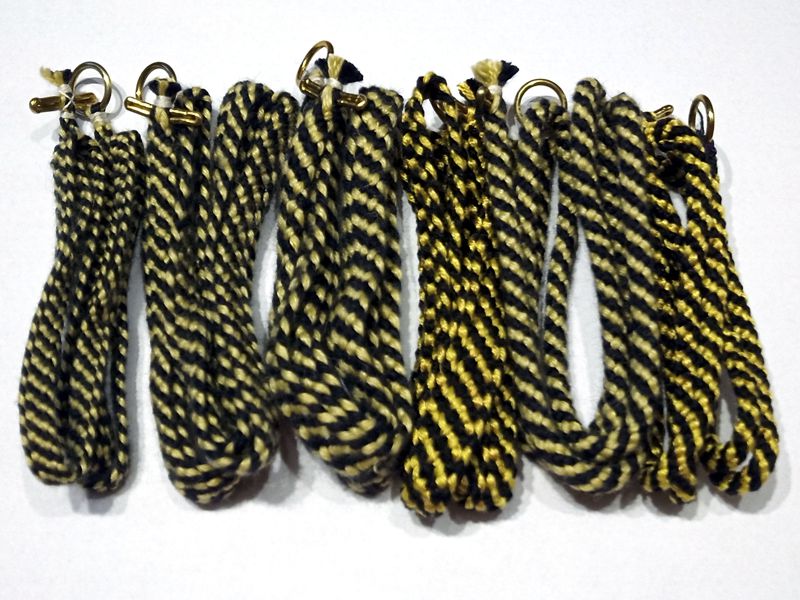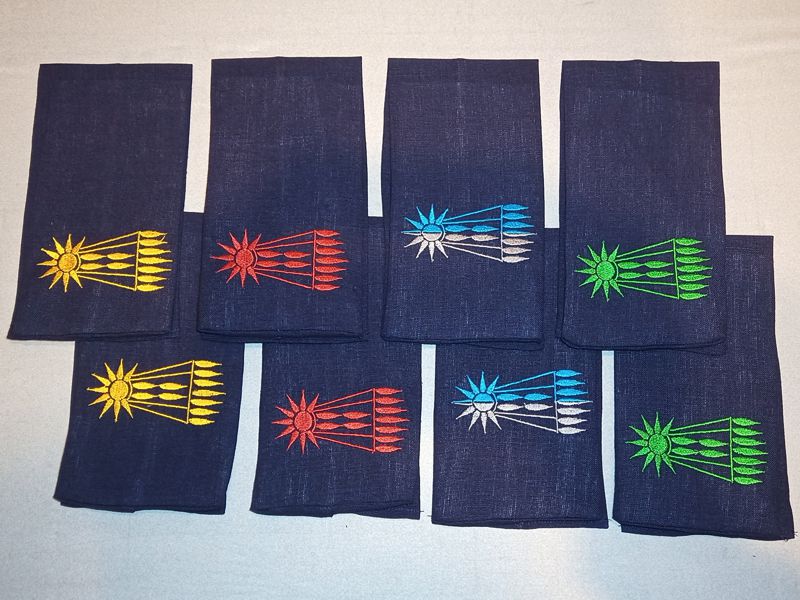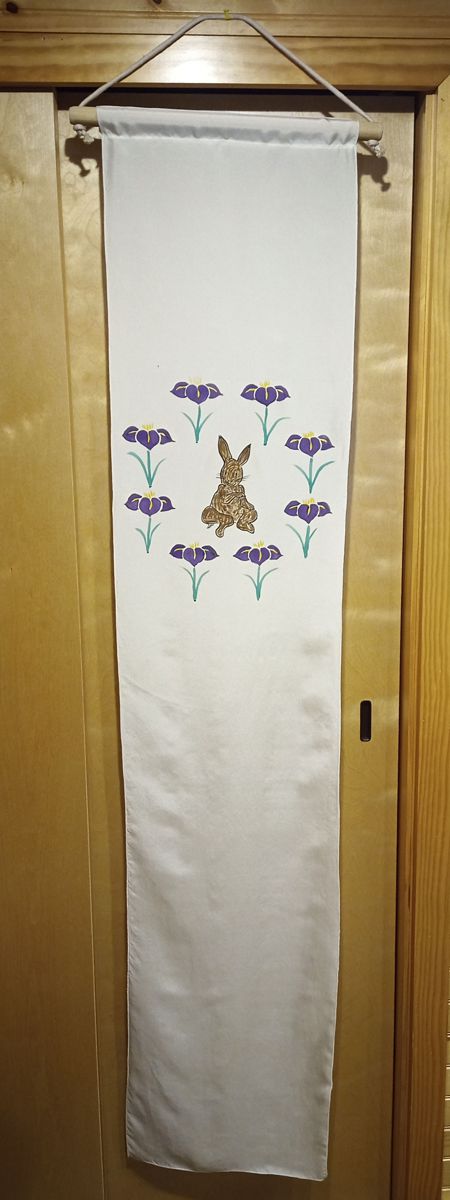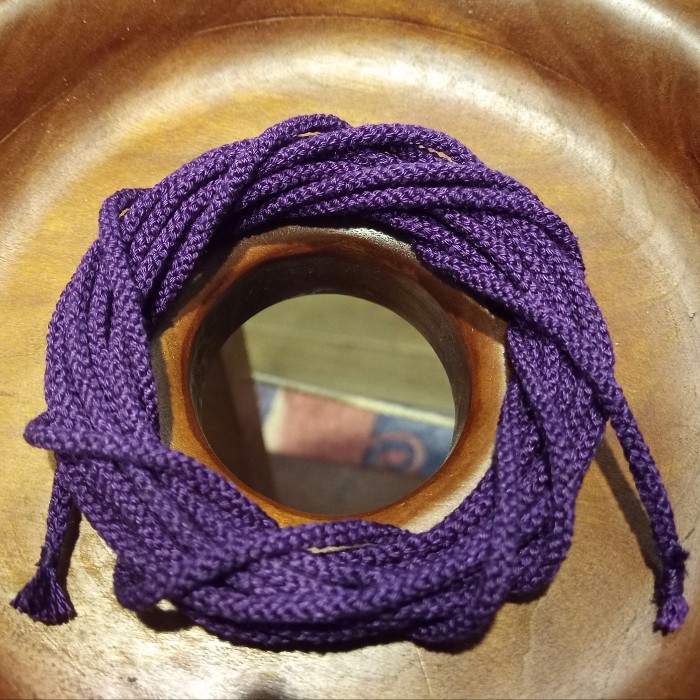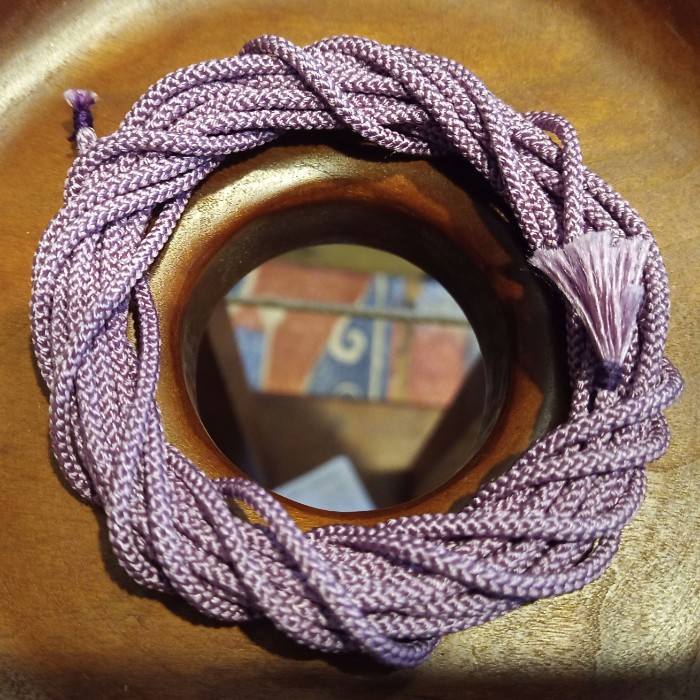Normally, I try to hand over these things by Agincourt, but with Baronial Investiture just weeks later I wound up holding off on presenting these until I could present them to the new Baronage.
First is this set of six silk braids I completed in September. These are all 8-strand marudai braids done in silk.
Second is this set of 8-strand marudai braids I completed in October. Some of these are done in silk, and some of them are done in this super-soft silk/alpaca blend yarn we bought back in January. I wanted to experiment and compare 3 ends of silk/alpaca yarn per strand to the 8 ends of lace-weight silk yarn per strand that I normally use.
Finally is this set of eight machine-embroidered belt favors for the Baronial Comet awards. These apparently came in handy, as I saw several of them handed out later in the day.


